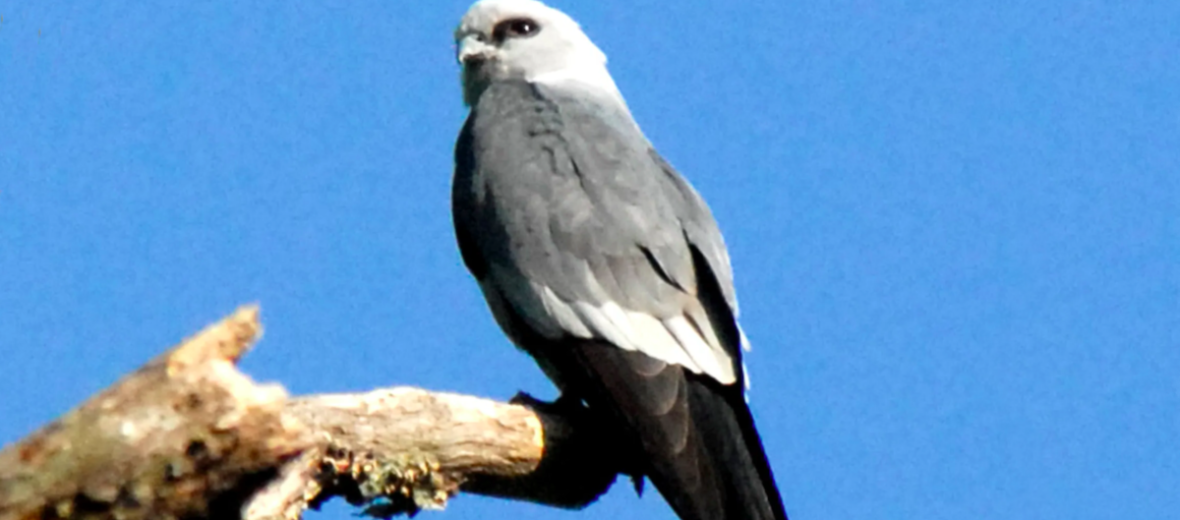
The Mississippi kite can be found in the United States, Mexico, Central America, and South America. These birds of prey can tolerate a wide range of habitats from prairies, pastures, open woodlands, riparian forests, grassland habitats, croplands, and even urban and suburban locales. With a widespread and growing population, along with no real threats (sans habitat destruction), these birds are listed as Least Concern by the IUCN.
First the Stats…
Scientific name: Ictinia mississippiensis
Weight: Up to 9.4 ounces
Length: Up to 15 inches
Wingspan: Up to 32.70 inches
Lifespan: Up to 11 years
Now on to the Facts!
1.) These birds are migratory and travel thousands of miles south, to subtropical South America.
2.) They migrate, each winter, in groups of up to 30 birds.
3.) While migrating south, they can often be seen in mixed flocks of up to 10,000+ birds.
4.) Mississippi kites are social birds that don’t tend to monitor territories.
5.) These kites are diurnal (active during the day).
But wait, there’s more on the Mississippi kite!
6.) These kites are often seen on the wing (in flight). They seem to almost hover in flight as they search for prey.
7.) Their call sounds similar to a child’s squeaky toy.
Did you know…?
Kites and hawks don’t currently have a clear distinction. Kites are often placed in the same group as buteonine hawks. They are closely related to slender-billed kites and also black-collared hawks.
8.) A group of kites is called a roost, stooping, brood, kettle, or string.
9.) Not only are they valued by farmers for their diet of cicadas, grasshoppers, and other crop-damaging insects, but they will also eat mice, voles, gophers, smaller rats, smaller and younger birds, amphibians, and reptiles.
10.) Monogamous (mate for life) breeding pairs are formed soon after, or before, arriving at breeding sites.
But wait, there’s still more on the Mississippi kite!
11.) Courtship displays are not often displayed.
12.) Nests are often guarded by the parents to protect their eggs and/or young.
13.) Females lay up to 2 eggs that hatch in up to 32 days.
14.) The young are independent in up to 34 days.
15.) Great horned owls, ravens, and raccoons all prey on Mississippi kites or their eggs.
Now a Short Mississippi Kite Video!
Be sure to share & comment below! Also, check out the Critter Science YouTube channel. Videos added regularly!
Want to suggest a critter for me to write about? Let me know here.



